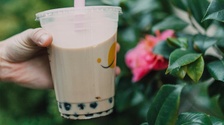Темы для тебя
Хочешь что-то сказать?
Выбор редактора

What it's like to live in Portugal
7 нравится · 7 Комментариев

Conflict at Work: How to Handle Disagreements in English
15 нравится · 9 Комментариев

How to Give and Receive Constructive Feedback: Strategies for Success in the Workplace
65 нравится · 21 Комментариев

The Italian Periodo Ipotetico
11 нравится · 5 Комментариев

10 American Car Idioms You Should Know
33 нравится · 14 Комментариев

Why English Learners Struggle with Listening (and What to Do Instead)
26 нравится · 17 Комментариев

A Guide to Mouthwatering Chinese Street Food and How to Order It in Chinese
8 нравится · 4 Комментариев

March Madness and Sports English: Essential Phrases for Basketball Fans
15 нравится · 4 Комментариев

How to Resign from Your Job Professionally: A Guide for ESL Speakers
14 нравится · 4 Комментариев

Want to Learn Mandarin and Master Internet Slang? Try These Chinese Social Media Apps!
14 нравится · 6 Комментариев
Еще статьи
